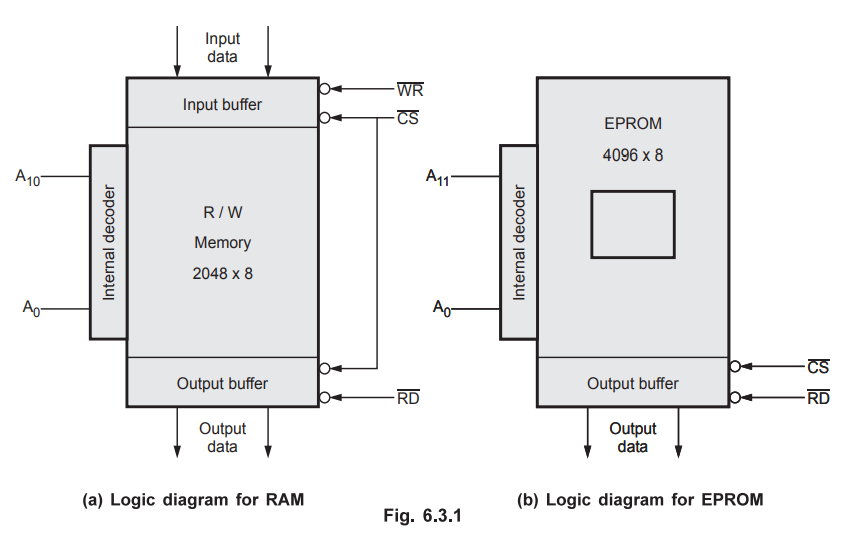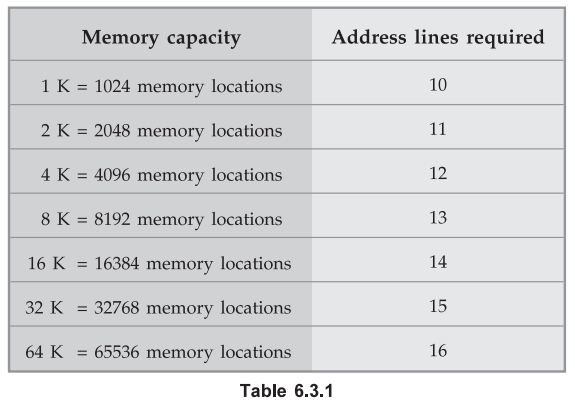Microprocessors and Microcontrollers: Unit I: (d) Memory Interfacing
Memory Structure and its Requirements
Memory Interfacing
As mentioned earlier, read/write memories consist of an array of registers, in which each register has unique address.
Memory Structure and its Requirements
As
mentioned earlier, read/write memories consist of an array of registers, in
which each register has unique address. The size of the memory is N × M as
shown in Fig. 6.3.1 (a) where N is the number of registers and M is the word
length, in number of bits.

Example
1 : If memory is
having 12 address lines and 8 data lines, then
Number
of registers/memory locations = 2N = 212
=
4096
Word
length = M-bit
=
8-bit
Example
2 : If memory has
8192 memory locations, then it has 13 address lines.
The
Table 6.3.1 summarizes the memory capacity and address lines required for
memory interfacing.

As
shown in the Fig. 6.3.1 (a) memory chip has 12 address lines A0-A11,
one chip select ![]() and two control lines, read
and two control lines, read ![]() to enable
output buffer and write
to enable
output buffer and write ![]() to enable the input buffer. The internal
decoder is used to decode the address lines. Fig. 6.3.1(b) shows the logic
diagram of a typical EPROM (Erasable Programmable Read-Only Memory) with 4096
(4 K) registers. It has 12 address lines A0-An, one chip select
to enable the input buffer. The internal
decoder is used to decode the address lines. Fig. 6.3.1(b) shows the logic
diagram of a typical EPROM (Erasable Programmable Read-Only Memory) with 4096
(4 K) registers. It has 12 address lines A0-An, one chip select ![]() one Read control signal. Since EPROM is a read only memory, it does not require
the
one Read control signal. Since EPROM is a read only memory, it does not require
the ![]() signal.
signal.
Review Questions
1. Explain the memory
structure and its requirements.
2. How much address
lines are required to interface 4 kbytes of memory ?
Microprocessors and Microcontrollers: Unit I: (d) Memory Interfacing : Tag: : Memory Interfacing - Memory Structure and its Requirements